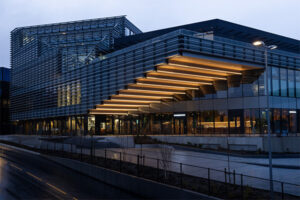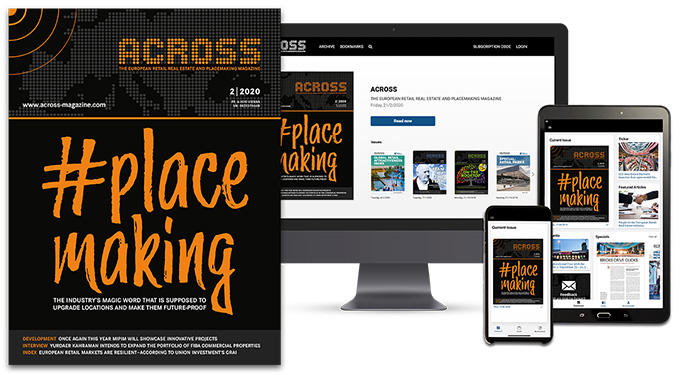ACROSS: What are consumers’ primary purchasing considerations at the moment – price, quality, or value for money?
Johannes Berentzen: We are currently observing clear polarization in consumer behavior. On the one hand, the premium and luxury sector is booming; formats such as Breuninger have shown that quality awareness and brand loyalty continue to be on the rise. On the other hand, discounters are gaining ground, including in the non-food sector, thanks to their clear focus on price and functional quality. Amazon is a prime example of this trend – with its strong market position, broad product range, and clear focus on availability and value for money. In food retail, value for money is what matters most. German discounters offer impressive quality at very reasonable prices, thanks to a combination of product range discipline and efficient logistics. Consumption has become increasingly mixed: organic eggs from farm-based suppliers, special offers from discounters.
Lars Jähnichen: Beyond price or brand, experience has become a key motivation to make purchases. Those who manage to attract customers by creating special atmospheres and in-store storytelling will significantly increase customers’ willingness to spend. This can be seen in concepts such as “Solebox” as well as other experience formats in the sneaker segment. Simply labeling goods – whether as “discount” or “luxury” – is no longer sufficient these days. The emotional approach is what counts.
ACROSS: Polarization is often described as a generational issue. Is there any truth to that?
Berentzen: I don’t give it much credence. The fact that Gen Z combines Louis Vuitton with Primark, for example, may be true on the surface – but behavior can be better explained by milieus. The Sinus-Milieus, for example, do not primarily differentiate by age, but by social and cultural attitudes, which is more useful analytically – and can also be mapped much better and in more geographical detail. When it comes to projects, we also work with datadriven needs-based categories.
ACROSS: We are currently witnessing widespread consumer reluctance – at least in the DACH region. What’s your interpretation of this contradiction between the desire to consume and the need to save?
Berentzen: Consumers are often fraught with contradictions. That fact is most evident when it comes to sustainability. When surveyed, consumers often express a desire to shop in a sustainable or fair way. However, a different picture emerges at the checkout counter, where the gap between ideals and actual behavior becomes obvious. We’ve observed a so-called “consumption disparity” – in other words, the desire to spend money while simultaneously tending to save. Such restraint is quite noticeable and often leads to consumers specifically looking for cheap offers – without compromising on quality.
Jähnichen: There is definitely a cultural component to this development. Saving is deeply rooted in German-speaking countries, in particular. In many Eastern European markets, the current situation is very different. And yet: Whether luxury or discount – the polar extremes are gaining ground, the traditional mid-range segment is losing ground.
ACROSS: Does this level of polarization mean that there is no future for the mid-range segment?
Berentzen: A distinction has to be made here: The “mid-range segment” as such is not dying – but “mediocrity” is. Companies in the mid-range segment that do not offer clear profiles or added value are struggling these days. Successful mid-range formats show: It’s not solely a matter of price, but of differentiation and positioning.
Jähnichen: Yes, and numbers prove this. Between 2009 and 2019 – in other words, before the pandemic – two particular segments significantly expanded their store networks: luxury brands and discounters. The ambiguous mid-range segment has lost out. Esprit is a prime example. The brand, which enjoyed many years of success due to its clear style identity, became diluted as a result of excessive diversification. Today, the name has disappeared from the market.
Berentzen: Nevertheless, many family businesses have proven that the “mid-range segment” can work – if you set yourself apart from mediocrity. Successful companies are not those had undercut each other on price, but those with clear positioning, quality, and a local touch.
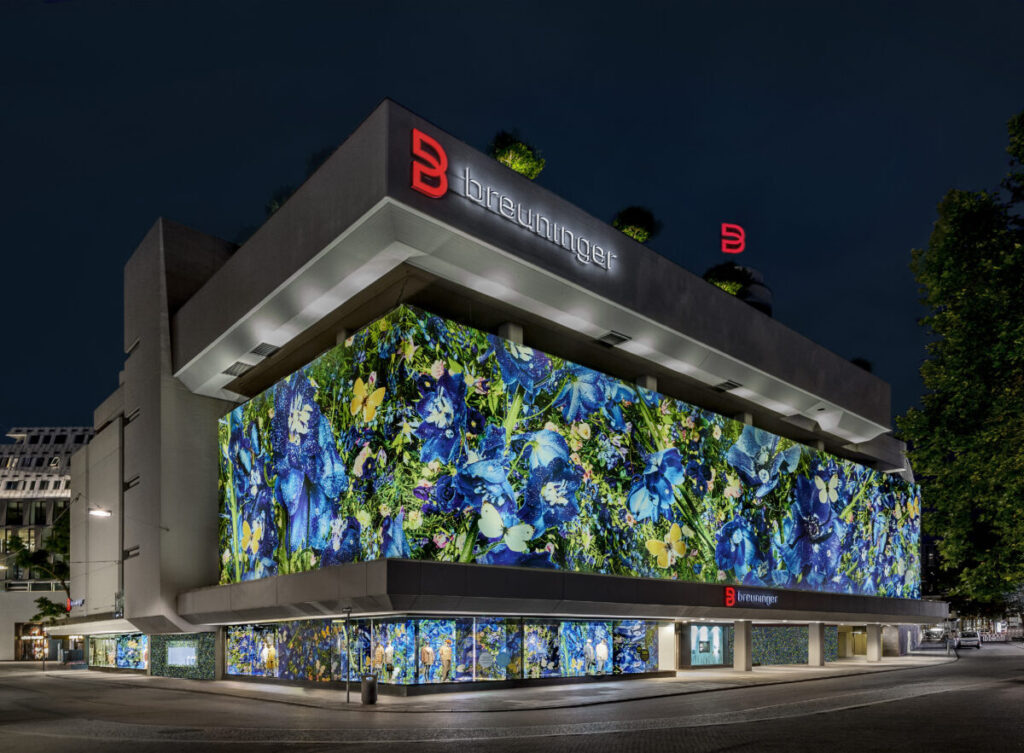
ACROSS: The discount sector has significantly changed its appearance in recent years. Why have discount brands become popular tenants at renowned shopping centers?
Berentzen: There is no doubt that discounters are different than they used to be. The best examples can be found in the food retail sector: Modern Aldi and Lidl stores have little in common with the traditional discounter models of the past. Product quality, product presentation, and store design have been continuously upgraded – the focus has increasingly shifted towards convenience, freshness, and a pleasant shopping experience. Meanwhile, full-range retailers are also experiencing an upward trend: Supermarket chains such as Rewe and Edeka are making targeted investments in product range depth, brand profiling, regional products, and service quality. In doing so, they are consciously moving away from a purely price-based approach – and are more strongly differentiating themselves from the discounters. In the competitive arena, providers are increasingly positioning themselves based on qualitative characteristics and no longer solely on price. Discounters remain the price leaders, but the question remains as to how far they can grow downwards or upwards without diluting their profiles. Whether or not international discount concepts can generate fresh impetus in the German market also remains to be seen.
Jähnichen: Discount retail has essentially filled a gap that consumers had been clamoring for. Action is a good non-food example. The discounter buys special items and regularly changes its range, which is a great way to make customers want to browse through its products. As a result, shoppers can always discover new, seasonal products when they visit Action. Thanks to its fast turnover and low prices, the store has built up a loyal customer base. Today, such stores attract roughly a thousand customers per day, which also increases footfall at shopping centers. There used to be an exclusion clause for discounters like Action in some contracts, but that has changed. Shopping center operators have realized that they benefit from the increased footfall. The challenge for real estate operators is to ensure that the footfall generated by discounters fits in well with the other tenant profiles. A transition to discounters has also taken place in the fashion sector. Brands such as Primark have shown that discount fashion is characterized by high-quality design and targeted product presentation. The design of such stores is very well thought out, especially at shopping centers. As a result, they are no longer perceived as traditional discount stores.
ACROSS: If one of the most important elements for the customer is experience, how is that reflected in the discount sector?
Berentzen: In the discount sector, experience primarily revolves around efficient and speedy processes. Customers don’t want to have to wait at the checkout counter for long periods of time or to squeeze through narrow aisles. They want a quick and uncomplicated shopping experience. Another element of the experience is efficient logistics, which ensures that products are available quickly and that the shopping process runs smoothly.
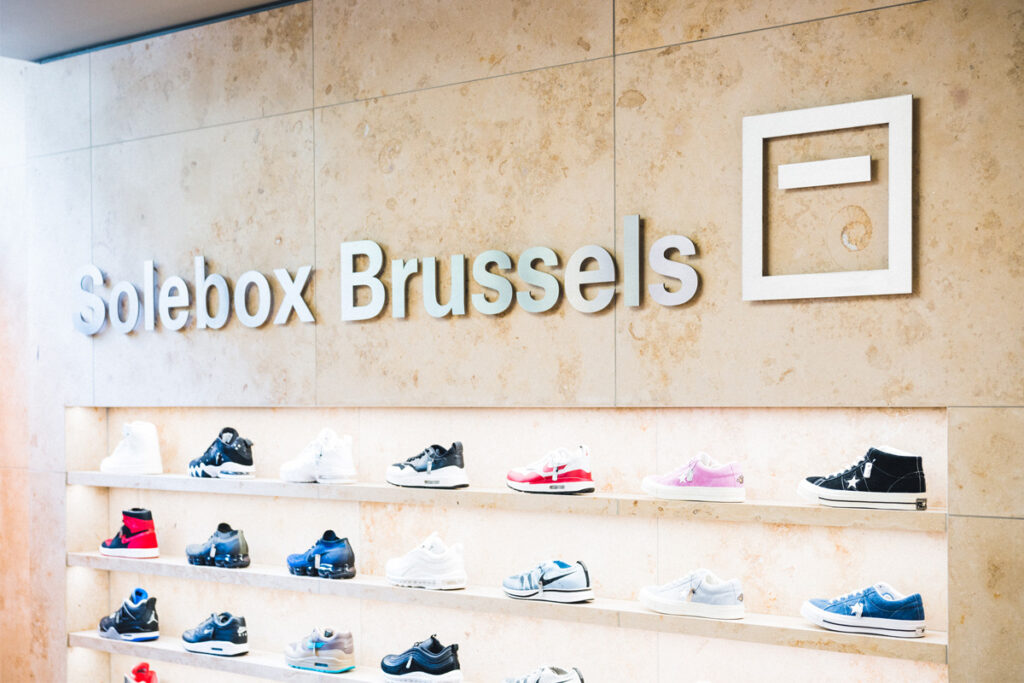
ACROSS: Can you give us an example of a discount store that has successfully integrated the experience factor?
Berentzen: Decathlon has developed its concept in such a way that it is not only perceived as a discounter, but its stores now offer a very modern and innovative shopping experience. Their special formats, for example, at more exclusive ski resorts such as Davos, have enabled them to offer a high-quality appearance that is no longer typical of discounters. Their omni-channel strategy and the use of technologies such as RFID allow purchases to be processed smoothly and quickly.
ACROSS: To what extent can the term “discounter” still be clearly defined?
Berentzen: The discounter model is based on a lean concept: a limited product range, low operating costs, a high turnover of goods, and clear price orientation. Efficient logistics, standardized processes, and simple space structures ensure profitability. Boxes and pallets used to dominate the scene; today, discounters are much tidier and more customer-friendly. The focus is still on efficiency – without neglecting customers’ increased expectations in terms of quality and shopping experience.
Jähnichen: In practice, however, it can be difficult to distinguish between the two. Brands such as Zara and H&M were perceived by some consumers as discount brands when they entered the market. They are committed to fast fashion, high turnover rates, and relatively low prices, but, as is the case with Inditex, stand for a high level of fashion expertise and are positioned as such in the market.
ACROSS: What impact has the polarization of the retail sector had on the requirements placed on brick-and-mortar retail space?
Jähnichen: Polarization in the retail sector has had a wide-ranging effect on retail space requirements. Based on what we’ve seen, online retail has gained more and more market share, especially in city centers. By the end of this decade, the online share could rise to as much as 50%. Consequently, for sectors such as fashion, shoes, and leather goods, the demand for brick-and-mortar space will continue to fall as fewer sales will be generated locally. We are also seeing a consolidation of branch networks. Companies such as Douglas are increasingly concentrating on flagship stores in central locations as opposed to operating several branches in one city. As a result of this trend, the overall number of stores has decreased, but, in some cases, the demand for space in these central locations has actually increased, as brands want to optimally present themselves and their products. Overall, however, retail space is shrinking and locations are becoming more polarized: The best locations in city centers have remained in demand, while peripheral locations have become less important.
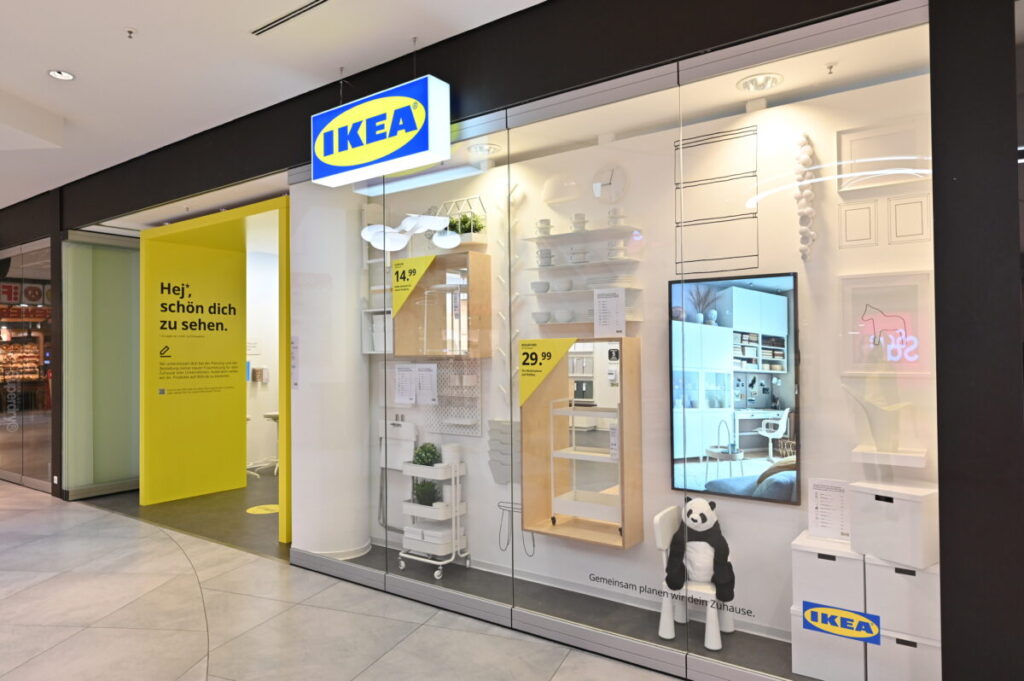
ACROSS: What impact has this had on smaller cities and their retail landscapes?
Berentzen: The role of the city center has significantly changed in smaller cities. While brick-and-mortar retail used to play a central role, especially for purchases beyond everyday needs, retail parks and online retail have increasingly taken over this function today. By contrast, local shopping – especially for food – has become more important and is often done close to home, outside the city center. In many cases, it is no longer worthwhile for consumers to travel into the city when they can find a wider and better range of products online. In smaller cities, in particular, local supply still plays an important role. Retail parks, particularly in the non-food sector, continue to perform well, but the pressure on sales is clearly noticeable in city centers. Demand has become polarized, which means that major cities with top-rate centers are benefiting more, while smaller cities are facing challenges.
ACROSS: What is happening to the retail space in cities affected by this development?
Jähnichen: Many cities are experiencing a drastic reduction in retail space, especially in less attractive locations. One example in our home market of Germany is Osnabrück, where the pedestrian zone has been reduced by a third. Footfall has increasingly dropped in certain areas, and retail locations that were once well frequented are either declining in popularity or experiencing a commercial downturn. A similar trend can be seen in other cities, such as in Heilbronn and Munich. While Munich has benefited from clever urban planning measures – for example, the conversion of Sendlinger Strasse into a pedestrian zone – many other cities have seen a significant reduction in retail locations. The challenge for cities lies in finding alternative uses to deal with vacancies and prevent desolation.
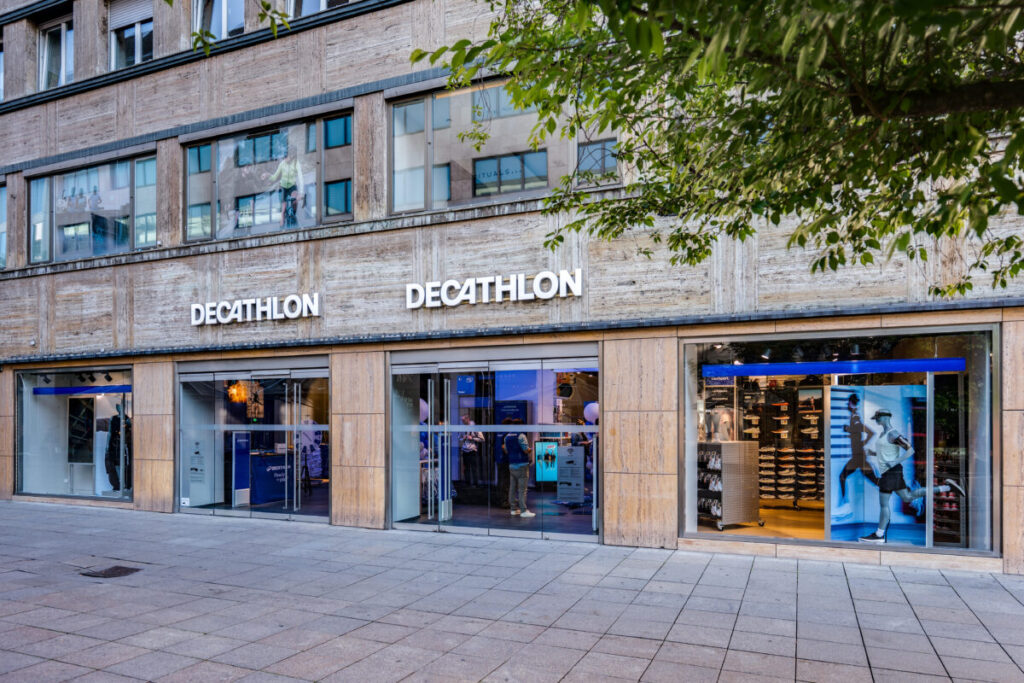
ACROSS: Where do the opportunities for brick-and-mortar retail lie?
Jähnichen: It’s important to stress that not all cities have been affected by the downward spiral. There are definitely a number of successful concepts that have filled the gap in more stable cities – ones that are characterized by strong demand and well-planned urban development. That’s where formats offered by large retailers, such as IKEA and Decathlon, can set new standards. Those companies have adapted their formats and have successfully established smaller retail spaces within city centers. For example, IKEA opened a store in Ravensburg covering just 120 square meters of space, and Decathlon’s compact 400-square-meter store in Stachus Square in Munich shows that large-format retailers can also adapt their models. These flexible concepts provide opportunities for brick-and-mortar retailers to maintain their presence in city centers.
ACROSS: How should retailers respond to these changed framework conditions?
Berentzen: First of all, retailers should not be held solely responsible for the development of cities. Cities need to define clear goals for the future and create framework conditions that steer retail and the real estate industry in the right direction. The tried and tested concept of city managers and economic development agencies is one such example. Leaving the responsibility to retailers is simply not enough. Cities have to proactively work on redesigning their retail landscapes, including gastronomy and services in the process. The key lies in responsible, long-term planning that involves all relevant stakeholders.
ACROSS: How can cities sustainably shape their retail landscapes?
Berentzen: Sustainably designing the retail landscape calls for close cooperation among urban planners, retailers, and the real estate industry. The lack of a clear vision and active support from local politicians is still a problem in quite a few cities.

Lars Jähnichen
Lars Jähnichen is the Managing Director of the IPH Gruppe.

Dr. Johannes Berentzen
Dr. Johannes Berentzen is the Managing Director of BBE Handelsberatung.
“Reduce Regulatory Intensity to a Healthy Level” – Three Key Demands to Be Addressed by Policymakers

The ZIA Spring Report, for which BBE and IPH, and, in particular, its Managing Director Joachim Stumpf, as the most recently appointed real estate expert, were jointly responsible for drafting the section on retail real estate, describes the current state of the real estate industry in Germany and lays out key demands to be addressed by policymakers. The report is by no means the end of the discussion – it is meant to provide impetus and initiate change, particularly in the retail real estate sector, and to identify the framework conditions needed to enable positive developments in city centers and within the retail sector. Three key demands have emerged as a result.
1. A reduction in planning and approval times. These processes often take too long and act as a hindrance to innovation and investment.
2. A significant reduction in the intensity of regulation. Germany is a country with an abundance of regulations, some of which go beyond their intended purpose. A new standard based on practicality and feasibility is needed.
3. A more flexible approach to the protection of existing buildings – away from ideology and toward pragmatic solutions that prioritize the functionality and safety of a building.



